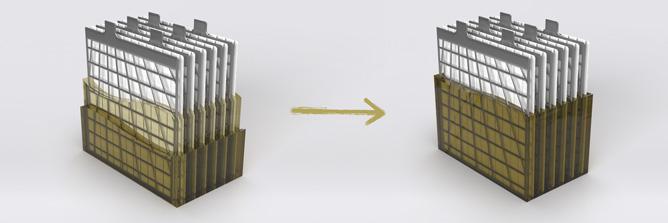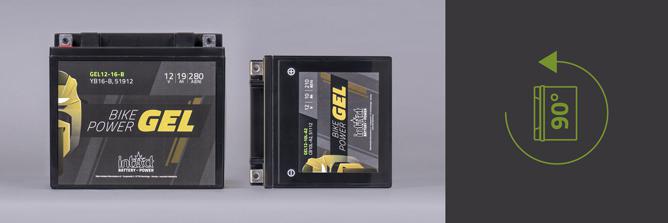GEL batteries: Advantages & features


You've heard of GEL batteries, but are wondering what makes them so special and whether they are the right choice for your vehicle or application? Don't worry, we'll enlighten you! In this comprehensive blog post, you'll learn everything you need to know about GEL batteries, from their benefits and applications to their limitations. Dive into the world of GEL technology and make the best decision for your needs.
You can also watch the corresponding video here:

GEL batteries, also known as gel accumulators, are a special type of lead-acid battery in which the electrolyte (the acid) is bound in a gel-like mass. This gelatinous consistency is created by adding silicic acid to the liquid electrolyte. The gel fills the entire battery space and envelops the lead plates, creating a large contact surface between the electrolyte and the plates.
GEL batteries are so-called recombination batteries. This means that they convert any gases produced back into acid and therefore do not suffer any electrolyte loss. They are equipped with safety valves that prevent the battery from inflating or bursting in the event of overpressure. GEL batteries are absolutely maintenance-free and are usually completely sealed so that the inside cannot be accessed.

GEL technology has a number of key advantages that set it apart from other battery types:
High cycle stability: Compared to conventional lead-acid batteries, GEL batteries can be discharged and recharged much more frequently before they lose their capacity. This means a longer service life and therefore a worthwhile investment.
GEL batteries can be discharged up to 80% of their capacity without being damaged. This enables a longer service life before recharging is required.
Thanks to the gel-like consistency of the electrolyte, GEL batteries can be installed in almost any position, even tilted up to 90 degrees. This offers flexibility during installation, especially in confined spaces.
GEL batteries are absolutely leak-proof as the electrolyte is bound. This makes them safer to handle and allows them to be transported by air freight, which is often not permitted with other battery types.
GEL batteries require no maintenance, as there is no need to top up with water and no electrolyte loss. This saves time and effort.
Compared to conventional lead-acid batteries, GEL batteries emit significantly less gas, which makes them suitable for use indoors or in the vicinity of food.

GEL batteries are versatile and are particularly suitable for the following applications:
As supply batteries, GEL batteries provide a reliable and long-lasting power source for lighting, electronics and other consumers. Their leak-proof and maintenance-free nature is a major advantage here.
GEL batteries are ideal as storage batteries in solar systems, as they can withstand deep discharges and have a long service life.
In uninterruptible power supplies (UPS), GEL batteries provide a reliable emergency power supply in the event of power failures.
For smaller electric vehicles such as electric cars or golf carts, GEL batteries can be a good option as they offer high cycle stability and good deep discharge capability.
Specially developed GEL batteries with adapted plates can also be used as starter batteries in motorcycles. They offer a combination of starting performance, cycle stability and leakage protection.

Although GEL batteries offer many advantages, there are also some applications for which they are less suitable:
AGM or special starter batteries are more suitable for vehicles with very high starting current requirements, such as large diesel engines, as GEL batteries have a slightly higher internal resistance and release the current somewhat more slowly.
GEL batteries are more sensitive to extreme temperatures, especially high temperatures. In such environments, they can age more quickly and shorten their service life.

GEL batteries are an excellent choice for applications where longevity, reliability and freedom from maintenance are paramount. Their high cycle stability, deep discharge capability, leakage resistance and position independence make them a versatile solution for a wide range of applications.